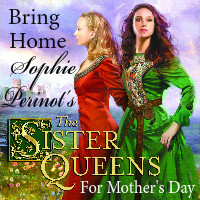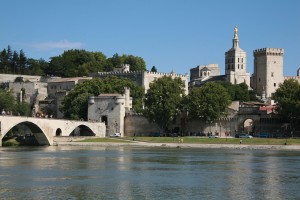Tag: Miranda Neville
Why I Want Books For Mother’s Day
Mother’s Day is a “brunch holiday.” I detest brunch. There is something so very non-committal about it. Besides, all the best food (not to mention the alcohol to go with it) comes out after dark. In the early years of being a mother I devoted considerable time and energy in the month of April to oh-so-subtly delivering my anti-brunch message (my husband comes from a Mother’s-Day-Brunch family). By the time we had two toddlers I’d given up on subtle and had “Sophie hates brunch” tattooed on hubby’s arm. Let’s face it there is NOTHING relaxing or celebratory about trying to consume a meal in a nice restaurant with two toddlers. And, crazy as it may seem, I’ve always been under the impression that a gift is supposed to delight and relax its recipient.
Motherhood is not, generally speaking, a relaxing occupation. Everything is prone to interruption. Everything. If you are a mother and you’ve been drawn, shampoo-still-in-hair, from the shower by disturbing sounds from elsewhere in your house—sounds suggesting that either furniture or children are being broken—then you know precisely what I mean. The TRULY perfect Mother’s Day gift would be an exotic getaway. A weekend on a beach inBali. Shopping inParis. A day at the spa. Heck, I drive past a Dominican retreat on my appointed motherly rounds, and lately I’ve been thinking a day with the nuns would do wonders for me. Please note, I am not even Catholic.
The truth is, for many of us, an actually physical getaway is pipe dream. There are kids to be delivered to and from a myriad of activities (anyone who’s had a “oh my god I forgot to pick up [insert child’s name here]” moment, raise your hand), homework to help with, etc. And can you just imagine the size of the laundry pile that would await a mother’s return should she actually manage to slip away toBali?
But being a mom is a joy and an avocation. It’s taught me a lot of things including how to live in the moment. After two decades of motherhood I know that I need to both treasure and expect my “me time” in small increments. You have perhaps heard of the twenty-minute power nap? Well, I have become the master of the eleven-minute sitting-in-the-car-getaway. And that leads me to books.
Books offer the perfect, portable, getaway. I may look like I am in the carpool line, waiting for the man with the whistle to call a hundred car engines to life, but I am not. I am in ancient Rome thanks to Kate Quinn’s Empress of the Seven Hills. I am in regency England watching a confirmed bachelor-dandy fall head-over-heels thanks to Miranda Neville. I am spending an afternoon with Catherine de Medici thanks to biographer R. J. Knecht. I am attending festivities at the Valois court with Philippe Erlanger. I am discovering a set of sisters from Provence in a secondary research source on Notre Dame de Paris—sisters who will lead me on an adventure ultimately resulting in the publication of my debut novel, The Sister Queens.
The cost of these getaways is negligible (certainly not in the league of airline tickets to Bali). For the cost of a brunch I’d hate for the five of us, my family can get me a whole armload of books I’ll love and that will fit into my schedule. Yes, I may get snappish when I am forced to put down a novel at a climatic moment to help find a uniform skirt gone missing, or “check” on someone who has already been in bed for an hour but is still not asleep (you know who you are, son). But it’s a lot easier to settle back down on the couch and slip back into the French Revolution with Michelle Moran’s Madame Tussaud than it is to sop up all the water and suds from interrupted tub-time. When I travel by novel I can get back home from Paris for tuck-in time. Try doing that by airplane (especially in a TSA infested air-travel world).
So, husband dearest, books please. Mother’s Day is still more than a week away. Don’t make me tattoo this on your. . . oh, never mind.
Location, Location, Location — Thoughts on the Use of Genuine Locations in Historical Fiction
My dear friend historical romance author Miranda Neville wrote an interesting piece at The Ballroom blog. The gist of Miranda’s post is that writers have an incredible collection of historical real-estate to browse when creating settings for their historical novels (whether straight or romance), and at each location we can cherry-pick the very best parts and amalgamate them into something new. For example, Miranda incorporated The Marble Saloon at Stowe into the fictional Mandeville House—setting for her just released The Amorous Education of Celia Seaton as well as two of her other romances.
Miranda’s post got me thinking about several additional points relevant to historical settings—specifically, pertaining to the use of real locations rather than locations created in the mind of the writer.
Timing is everything! Great cities, great cathedrals, and houses (both great and not so great) change over time. When an actual historical location is used in a novel we need to remember that—however iconic—that setting was not stagnant. Whether you are describing the skyline of Avignon or Westminster Abbey you’d better know what period you are writing about before you begin waxing wane with descriptions. And as a reader, you shouldn’t be too quick to expect certain locations to look certain ways (e.g., as they did when you visited, or in Aunt Irma’s postcards).
For example, Westminster Abbey is a true historic landmark. Millions have visited it, and many more have seen it in pictures or movies. What they’ve seen—and the images that rise to their minds when the Abbey is mentioned—is not the Abbey that existed when Eleanor of Provence was crowned Queen of England there in 1236. In fact, Eleanor’s husband, Henry III, was responsible for a masterful renovation of the Abbey (leaving it dramatically changed for generations to admire), a reconstruction that took years. As a result, the Abbey would have looked very different at various points in my novel, The Sister Queens.
Similarly, for much of its history (and today) the outline of the city of Avignon has been distinguished by the Papal Palace (gorgeous). But at the time of my novel, when Avignon was part of the Count of Provence’s territories, the great medieval palace seen in paintings and photographs didn’t’ exist. Describe Avignon including the palace and get it wrong. Read expecting to see the palace and it won’t be there. This is why it’s a darn good thing that . . . .
Historical novels are NOT guidebooks. While it IS important not to be anachronistic when portraying settings—making certain not to include features in an exterior or interior that didn’t exist in a particular time period—it is okay not to flesh out every corner of a room or every façade of a palace. I certainly believe that an author needs to know the world of her novel in depth in order to move her characters through it convincingly, but, unless you are describing the maneuvers of troops in a battle, sharing too much detail is unnecessary. A little era-setting detail often goes a long way. Readers like to use their imaginations, or at least this one does. When an author throws in too much description just because she/he has the research to support it, or when I feel he/she is showing me miniscule detail gratuitously (the details themselves are interesting or intriguing but in no way relate to the plot), I start to skim. Skimming is bad.
Of course there ARE occasions when an infusion of detail can enrich the reader’s experience. This is particularly true when we want readers to share the sensory experiences of a character—a young woman overwhelmed by the view from a chateau, or nearly dizzied by the incense-saturated air and soaring voices singing the Laudes Regiae in a magnificent abbey. Nothing can draw a reader into the emotion of a moment more effectively than the purposeful inclusion of carefully selected details of the historical setting. But note that I said, “purposeful inclusion” and “carefully selected.” Filtering is a must. Try to load the same level of detail into every scene in your historical novel and you ruin the effect.
Writers can also use setting itself as catalyst to move a scene forward. Of course on the large scale this fact is obvious—pick any scene in a historical novel and move the setting as a form of exercise (from the gardens of a grand Château to its great hall). The meaning of and physical movements in the scene are likely to change, even if you attempt to keep the dialogue the same. But, setting as catalyst can also occur in small subtle ways in fiction as it does in real life. Have you ever noticed something—on your desk, outside your window—that, serendipitously, makes your mind leap to a new place and to a particular idea or to action? That can happen to characters too. A mother picks up a bird’s nest and thinks of her children. The pattern in a window reminds a character of a gown and thus of a particular partner from the ball the evening before. I find as a writer I often want, even need, to place a certain scene in a certain setting in order to take advantage of elements of the architecture or décor that I know by my research would have existed in that place at that time.
What about you? As a writer how do you handle the REAL real-estate that makes an appearance in your work? As a reader how much detail is enough to make you feel immersed in the past? Where does the amount of detail cross a line, leaving you bogged down? Do you have strong feelings about the balance between real settings/descriptions based on research and locations/rooms created in the mind of the author?

